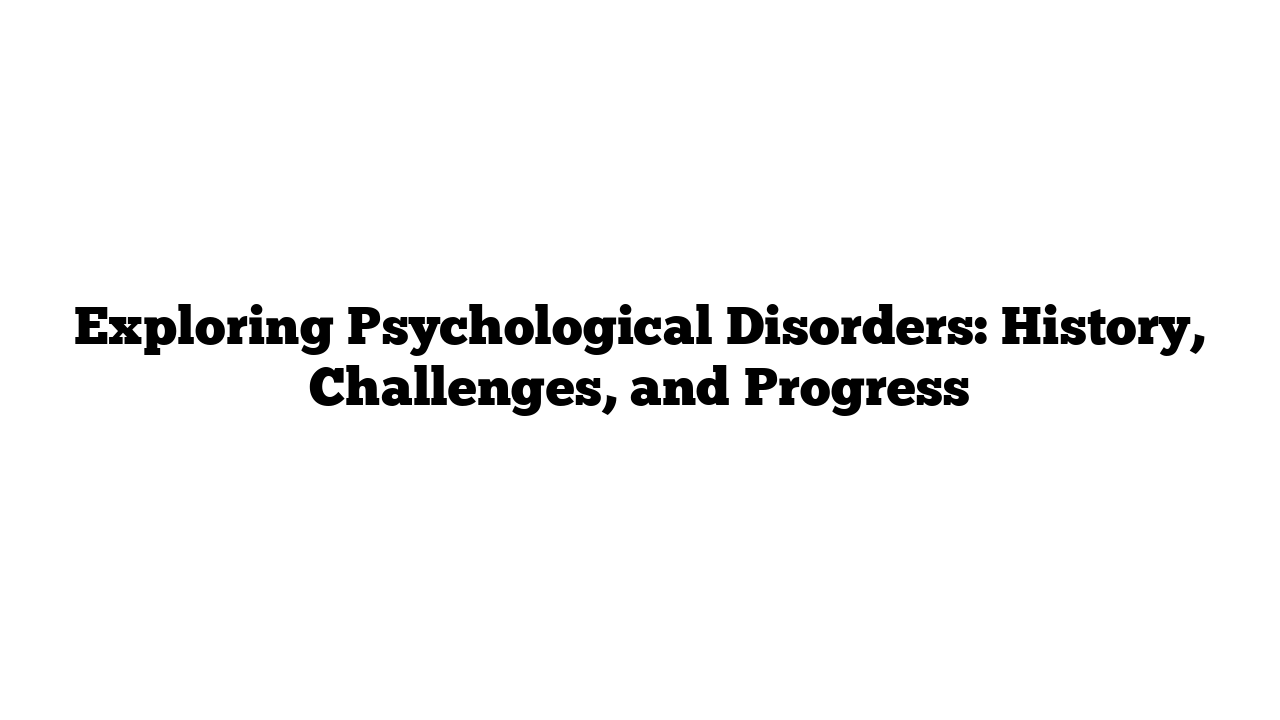The journey to understanding and treating psychological disorders has been a long and evolving process. From exposing horrific asylum conditions to developing modern diagnostic tools, the history of mental health care highlights both the challenges and advancements in the field.
This article delves into key milestones, including notable experiments, evolving perspectives, and current approaches to understanding mental illness.
A Glimpse Into the Past: Asylums and Early Mental Health Care
In 1887, journalist Elizabeth Cochran, known as Nellie Bly, infiltrated a psychiatric hospital under the guise of mental illness. Her groundbreaking expose, “Ten Days in a Mad House,” revealed deplorable conditions: rotten food, cold showers, rampant rats, abusive staff, and patients restrained against their will. Her courageous work shed light on the mistreatment and led to reforms in mental health care.
Fast forward nearly a century, and another experiment would challenge psychiatric institutions. In 1975, psychologist David Rosenhan published his famous study, “On Being Sane in Insane Places,” which exposed the flaws in psychiatric diagnoses. Rosenhan’s team of pseudopatients — completely healthy individuals — were admitted to psychiatric hospitals after claiming to hear voices. Once inside, they acted normally, yet it took an average of 19 days (and up to 52 days) for them to be released, often with a diagnosis of paranoid schizophrenia in remission.
In the second phase of his experiment, Rosenhan informed a hospital that he would send pseudopatients for evaluation. Staff flagged 41 of 193 incoming patients as imposters — but none were pseudopatients. His study raised critical questions about diagnostic accuracy and the broader implications of labeling individuals with mental disorders.
Defining and Classifying Psychological Disorders
The field of psychology has long grappled with how to define, diagnose, and classify mental health disorders. Terms like “sad,” “obsessive-compulsive,” or “hyperactive” illustrate the challenges of distinguishing normal behaviors from diagnosable conditions. Today, mental health professionals define psychological disorders as patterns of thoughts, feelings, or behaviors that are deviant, distressful, and dysfunctional:
- Deviant: Behaviors or thoughts that differ from cultural norms. For example, what’s considered deviant in one culture may be entirely acceptable in another.
- Distressful: These behaviors or thoughts cause significant discomfort to the individual or those around them.
- Dysfunctional: The individual’s ability to live or work is measurably impaired.
Shifts in Understanding: From the Medical Model to the Biopsychological Approach
During the 18th and 19th centuries, mental health care began shifting toward the Medical Model, which treated mental illness as a physiological condition that could be diagnosed and cured. For example, doctors recognized that advanced syphilis could cause severe neurological and mental symptoms. This perspective represented progress, moving away from confining individuals in asylums to treating them in medical settings.
However, the Medical Model had limitations. Modern psychology embraces the Biopsychological Approach, a holistic view that considers:
- Biological factors: Genetics, brain chemistry, and neurological conditions.
- Psychological influences: Stress, trauma, and memories.
- Social and cultural contexts: Norms and expectations that shape behavior.
This comprehensive approach recognizes that mental health is influenced by a complex interplay of nature and nurture.
The DSM: Standardizing Diagnosis
A critical tool in modern psychiatry is the Diagnostic and Statistical Manual of Mental Disorders (DSM), first published in 1952 and now in its fifth edition (DSM-5). This manual helps professionals classify and diagnose disorders while evolving with new research and societal changes. For example:
- Earlier editions classified homosexuality as a disorder. This designation was removed in 1973, reflecting a shift in understanding.
- The DSM-5 introduced new classifications, such as Disruptive Mood Dysregulation Disorder to address overdiagnosis of Childhood Bipolar Disorder.
- Emerging diagnoses like Internet Gaming Disorder show how societal changes influence mental health concerns.
Despite its usefulness, the DSM faces criticism. Some worry about overdiagnosis, misdiagnosis, and the stigmatization that labels can cause. Still, it remains a vital tool for research, treatment, and insurance purposes.
Breaking Stigma and Moving Forward
In 2010, the World Health Organization reported that 450 million people worldwide live with mental or behavioral disorders. Despite this prevalence, stigma and misconceptions persist. Media portrayals often lean on harmful stereotypes, further complicating efforts to foster understanding.
By adopting frameworks like the Biopsychological Approach and continually refining diagnostic tools like the DSM, the field of psychology is moving toward more effective and compassionate care. Mental health professionals are striving to balance diagnosis and treatment with an awareness of cultural, social, and individual nuances.
For more insights into mental health and wellness, visit medicaltimes.io. Explore related articles from trusted sources like Psychology Today, NAMI, and the World Health Organization for additional resources.
FAQs
1. What is the DSM-5?
The DSM-5 is the Diagnostic and Statistical Manual of Mental Disorders, used to classify and diagnose mental health conditions.
2. Why was the Rosenhan experiment significant?
It highlighted flaws in psychiatric diagnoses and raised questions about the labeling and treatment of individuals in mental health care.
3. What is the Biopsychological Approach?
A holistic perspective that considers biological, psychological, and social factors in understanding and treating mental health disorders.
4. How can we reduce stigma around mental health?
Education, open conversations, and accurate media representation can help dispel myths and foster understanding.
